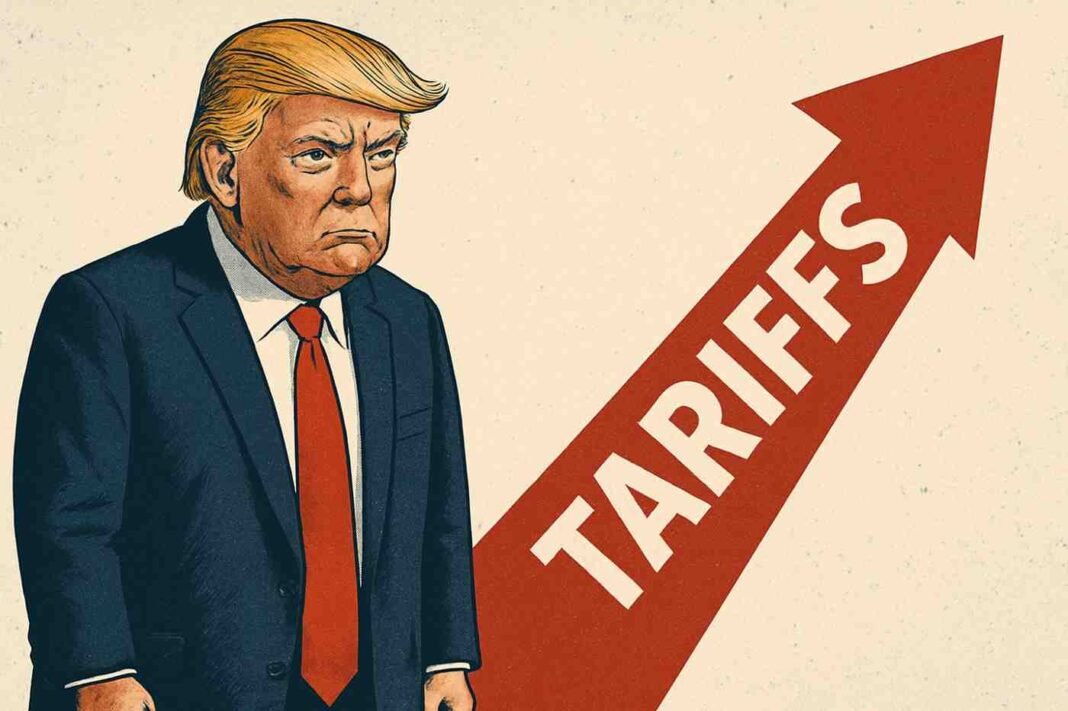Trump’s Latest Tariff Announcement
US President Donald Trump on Thursday announced a sweeping new trade move, declaring that imports of branded and patented pharmaceutical drugs would face tariffs of up to 100 per cent from October 1, 2025. The announcement, made on his Truth Social platform, comes as part of Trump’s ongoing tariff-heavy economic agenda, which he claims is designed to bolster American manufacturing and reduce the nation’s fiscal deficit.
The president clarified that only companies actively investing in US manufacturing infrastructure would be exempt. “Starting October 1st, 2025, we will be imposing a 100 per cent tariff on any branded or patented pharmaceutical product, unless a company is building their pharmaceutical manufacturing plant in America,” Trump wrote. He further defined “is building” as projects where companies had either “broken ground” or had facilities already “under construction.”
This latest measure follows a series of protectionist tariffs imposed over the past few months. Alongside pharmaceuticals, Trump also levied a 50 per cent duty on imports of kitchen cabinets and bathroom vanities, 30 per cent on upholstered furniture, and 25 per cent on heavy trucks. While Trump invoked “national security and other reasons” as justification, the sweeping scope of the tariffs has raised questions about their legal basis and potential trade disputes.
Why India Could Be Hit Hard
India, one of the world’s leading pharmaceutical exporters, stands particularly exposed to the new measures. According to data from the Pharmaceuticals Export Promotion Council of India (Pharmexcil), India’s pharmaceutical exports in FY24 reached $27.9 billion, with the United States accounting for 31 per cent of this total—roughly $8.7 billion (₹77,138 crore). During just the first half of 2025, India exported another $3.7 billion (₹32,505 crore) worth of drugs to the American market.
Indian pharmaceutical companies play a vital role in the US healthcare system, supplying over 45 per cent of generic drugs and around 15 per cent of biosimilars consumed in the country. Key Indian players such as Dr Reddy’s, Sun Pharma, Aurobindo Pharma, Zydus Lifesciences, and Gland Pharma derive anywhere from 30 to 50 per cent of their revenues from the American market.
Although Trump’s tariff announcement specifically targeted branded and patented medicines—a segment typically dominated by multinational giants like Pfizer, Merck, and Johnson & Johnson—the lack of clarity over whether complex generics or speciality drugs will be included has caused unease across India’s pharma sector. The potential for broader application could significantly disrupt India’s role as a major supplier of affordable medicines.
Risk To US Consumers And Insurers
American consumers, hospitals, and insurers rely heavily on low-cost generics imported from India to keep healthcare affordable. Any extension of tariffs to generics would likely trigger price hikes, worsen inflation, and even cause drug shortages across the US. Industry experts warn that smaller and mid-sized Indian manufacturers, already operating under thin margins, may struggle to absorb higher costs and would have little choice but to pass them on to US buyers.
“Generic drugs from India are a backbone of the American healthcare system. If tariffs make them more expensive, the direct burden will fall on US patients and insurers,” said a senior analyst with a leading healthcare consultancy.
While some large Indian pharmaceutical companies already maintain or are expanding their manufacturing presence in the US, others may not have the capacity to comply with Trump’s “is building” requirement in time to avoid punitive duties.
India-US Trade Tensions Escalate
This is not the first time India has found itself in Trump’s tariff crosshairs. The president has already imposed a 50 per cent tariff on Indian imports, including a controversial 25 per cent “penalty” linked to New Delhi’s continued purchases of Russian oil. Analysts argue that these escalating trade frictions could sour economic ties further, especially given India’s dependence on the US as its largest pharmaceutical market.
For now, Indian industry leaders are closely monitoring whether the 100 per cent tariff will remain confined to branded and patented drugs or extend to complex generics. The final contours of the policy will likely determine whether Indian drugmakers are forced to recalibrate their export strategies or accelerate investments in American manufacturing facilities.
The Road Ahead
As the October 1 deadline approaches, both Indian pharmaceutical firms and US healthcare providers will be anxiously watching for clarifications and possible exemptions. Should the tariffs remain narrowly targeted, the immediate fallout for Indian exporters may be limited. But any expansion of the scope could have sweeping implications, not only for India’s pharma sector but also for the affordability and accessibility of medicines in the United States.
What is clear, however, is that Trump’s tariff-heavy trade policies have placed the global pharmaceutical supply chain under fresh strain, raising questions about whether protectionism will ultimately deliver economic security—or result in higher costs and reduced choices for American consumers.








